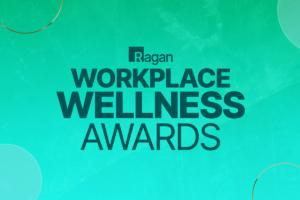Curating the week in wellness Jan. 24-28, 2022
Federal agencies aim to advance equity with HIRE, five benefits that can support working parents and how to support the ‘Shecovery.’

Hello, wellness pros!
It is hard to believe we are almost through a full month of 2022 already, but here we are with a collection of thought-provoking articles, tips and takeaways for the week.
Please get in touch with any ideas, suggestions or feedback on how we can serve you better or cover topics that are top-of-mind at your organization. Email: kaceyl@ragan.com.
1. Launch of federal agencies’ HIRE effort.
The Hiring Initiative to Reimagine Equity (HIRE) is the result of a multi-year collaborative effort between the U.S. Equal Employment Opportunity Commission (EEOC) and the Department of Labor’s Office of Federal Contract Compliance Programs (OFCCP). That’s a mouthful, but the initiative’s aim is to expand access to good jobs to workers from underrepresented communities. HIRE will also assist in addressing key hiring and recruitment challenges, such as opportunity limits along lines of race, color, ethnicity, gender, LGBTQ+ status, religion, disability, age and veteran status.
A press release about the initiative on the EEOC website says, “Many employers and worker organizations are seeking actionable strategies to ensure that DEIA (diversity, equity, inclusion and accessibility) programs promote meaningful progress while ensuring compliance with equal employment opportunity laws. The EEOC and OFCCP will convene a series of roundtables and meetings to identify actionable strategies to promote organizational policies and practices that advance equity. The agencies will develop materials such as guidance documents or promising practice resources.”
2. Bringing families to the workplace.
In a column adapted for Time Ideas, Indra Nooyi, former CEO of PepsiCo, expresses a belief that the “future of work” question needs to include families in the answer.
She writes, “I believe that we must address the work and family conundrum by focusing on our infrastructure around ‘care’ with an energy and ingenuity like never before.”
A new report by Maven Clinic and Great Place to Work, covered by Employee Benefit News, finds that “the stress of balancing family needs with work is causing nearly one in four working parents to experience burnout.” To best support working parents, the report shared five benefits that are making a difference in helping employees manage financial and emotional stressors: [EA1]
- Fertility support programs
- Adoption support
- Egg-freezing coverage
- Surrogacy coverage
- Subsidized childcare expenses
The viral #ShowUsYourLeave campaign, started by theSkimm, has prompted many employers to highlight their offerings on this front.
3. A look at the “Shecovery” efforts.
Maybe you heard about the so-called “Shecession,” a phenomenon of women leaving the workforce during the COVID-19 pandemic; well now, there’s the “Shecovery,” which are the moves being made to attract and keep more women in the workplace. Digiday points to Facebook and Twitter introducing permanent work-from-home policies, and Pinterest and public relations agency Inkhouse increasing paid family leave policies for women and caretakers.
These more flexible work environments as well as efforts to reverse the gender pay gap with publicly available salaries, providing childcare and company policies around pregnancy loss are all being taken up by companies in support of the “Shecovery.” The caveat, says Stacey Delo, CEO of Après, a career resource for moms, is that such policies and offerings need to be developed and supported.
“It’s easy to create initiatives that look good on paper,” Delo says. “But it’s another to make sure that hiring managers, managers, human resource leaders and executives are well-equipped to follow through on them.”
4. The evolution of the office to deliver flexibility and well-being.
In a piece for Work Design Magazine, SmithGroup architects John Crump and Deborah Nemeth write, “The pandemic has challenged the function of the physical office and has fundamentally shifted the ways and means by which employees work. As a result, the future office is evolving into a resource that can help to fuel productivity, increase innovation, foster collaboration and strengthen culture. To support this evolution, space typologies within the office—even the building itself—will need to flex in order to accommodate this shift.”
For office spaces to better support physical and emotional well-being post-pandemic, they share a few recommendations:
- Access to light, abundant fresh air, views to nature and outdoor spaces, which are associated with a 15% increase in improved creativity and well-being.
- On-site fitness centers, healthy food and snack options available in building lounges and/or cafes all offer support and convenient access to healthy choices.
- The integration of hands-free technology where possible to promote cleanliness.
- Digital infrastructure designed to allow employees to work from anywhere inside an office.
- Increased outside air ventilation and inside air filtration—both yield an 8% increase in performance.
5. Telehealth has room to improve when it comes to accessibility.
The adoption of telehealth solutions was slow prior to the pandemic, but now, almost two years of virtual care has shown dramatic improvements. However, employers seem to be viewing telehealth more positively than employees when it comes to accessibility.
In reporting by HR Dive, there is a reminder that underserved populations tend to have less access to care overall and that now extends to telehealth.
“Employers need a cultural awareness of how employees of underserved populations perceive their own health in order to tackle the accessibility issue,” Bipinchandra Mistry, chief medical officer at benefits outsourcing firm Alight Solutions, says. “That includes the social determinants of health different employee groups face, such as income, education and physical environments, among others.”
COMMENT
Ragan.com Daily Headlines
RECOMMENDED READING
Tags: Department of Labor, hiring, recruit, return to the office, telehealth, U.S. EEOC, women in the workplace, working parents






